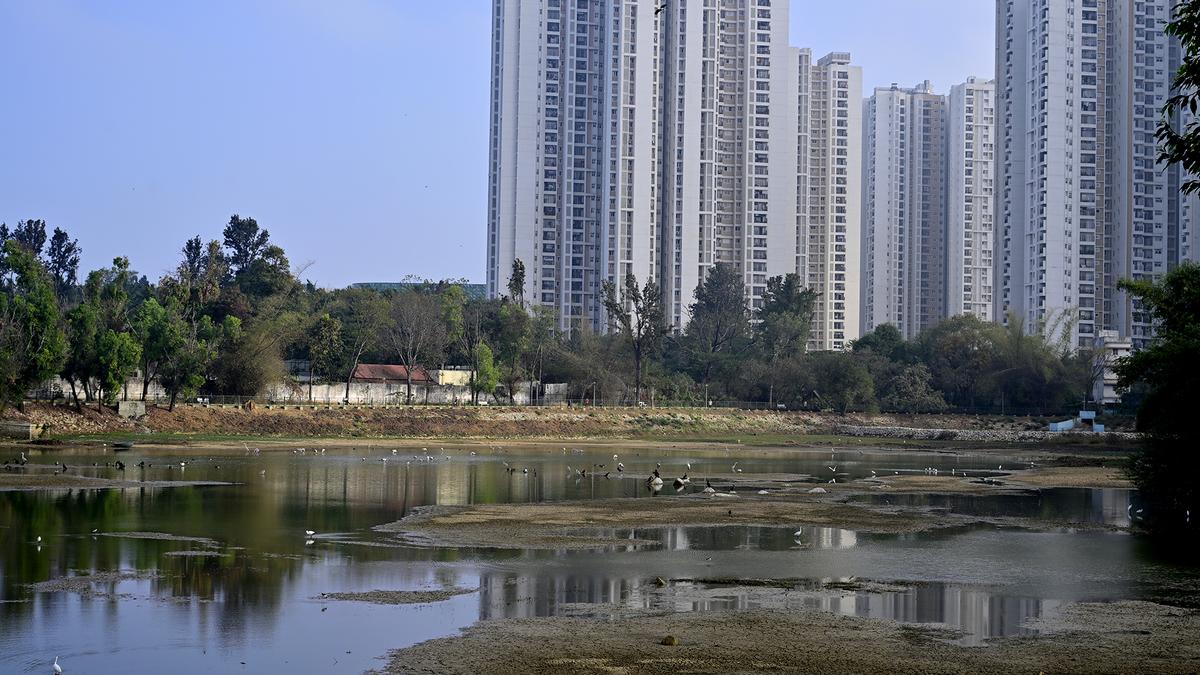
Whose city? Whose keres? Mapping the State-backed evictions of Bengaluru’s lake communities Premium
The Hindu
When the city’s topography changed, what also parallelly emerged was a spate of ‘ecological evictions’, or in other words, the eviction of those who lived on Bengaluru’s keres, for real estate gains and to satisfy urban imaginations. And to legitimise these dispossessions, the state and judiciary have often resorted to environmental concerns, argues Achintya Anita Gurumurthy, a former research fellow at NCBS, who recently spoke at ‘Research Talks’ held by NCBS.
From more than 1,000 at a point of time, Bengaluru’s keres or lakes have come down to around 200. In place of Dharmambudhi Lake stands today the Majestic Bus Terminal. The Sampangi Lake gave way to Kanteerava stadium. HSR Layout, which is today the address of some of the biggest start-ups in the country, stands on top of what was once Parangipalya Lake.
When the city’s topography changed, what also parallelly emerged was a spate of ‘ecological evictions’, or in other words, the eviction of those who lived on Bengaluru’s keres, for real estate gains and to satisfy urban imaginations. And to legitimise these dispossessions, the state and judiciary have often resorted to environmental concerns, argues Achintya Anita Gurumurthy, a former research fellow at NCBS, who recently spoke at ‘Research Talks’ held by NCBS.
While such evictions happen across the country, Bengaluru’s unique history with its lakes makes it a very specific kind of case, says Gurumurthy.
“We see that there is a phenomenon of ecological evictions which is happening across the country. Residents’ Welfare Associations and largely bourgeoisie groups in the city rely on the environment as a discourse to evict people from the places where they have been staying. But Bengaluru is a very specific kind of case because it has a very specific history with its keres, lakes and tank ecology.”
On one side a narrative terming the lake dwellers as encroachers and illegal immigrants is deployed to legitimise the evictions; on the other side is the neoliberal imagination of Bengaluru as an emerging global city that is very important to the economic ambitions of the country, and therefore there is an inner-driven need to maintain a particular image for the city, Gurumurthy points out.
The elite sensibilities which seek to preserve the image of the city in a certain beautified and sanitised way can be seen in the form of upper-class environmental groups who often deride slum dwellers as ‘polluting’, ‘lazy’, ‘disease-ridden’ and so on. And importantly, more than often, it is seen that courts overwhelmingly side with the former, says Gurumurthy who has been relying on NCBS archive materials for her study.
Cities in the global south, especially in India, are rarely planned settlements. Encroachments are rampant. How several parts of the city have been inundated lately during monsoon is one of the prime indicators of the extent of real estate encroachment of lakes and their associated ecosystems. However, the law often takes a stand of policing subaltern informality while simultaneously valorizing elite informality, says Gurumurthy.

“Earth Day celebrations have already started in Bengaluru, with campaigns at various colleges such as St. Josephs, and Christ University where life-size elephants made from the invasive species, Lantana Camera, have been travelling to spread the message of conservation and coexistence, along with expert talks from WWF India and Ravi Chellam of Metastring Foundation,” said the release.

Vijayawada and Vizag metro rails: Centre approves appointment of SYSTRA MVA Consulting for preparing mobility plans. The New Delhi-based consultant has emerged as the successful bidder for preparing CMPs for both the projects. The Government of Andhra Pradesh has sanctioned DPRs for construction of the Visakhapatnam Metro Rail for a length of 46.23 km in three corridors at an estimated cost of ₹11,498 crore and the Vijayawada Metro Rail for a length of 38.40 km in two corridors at a cost of ₹11,009 crore.











